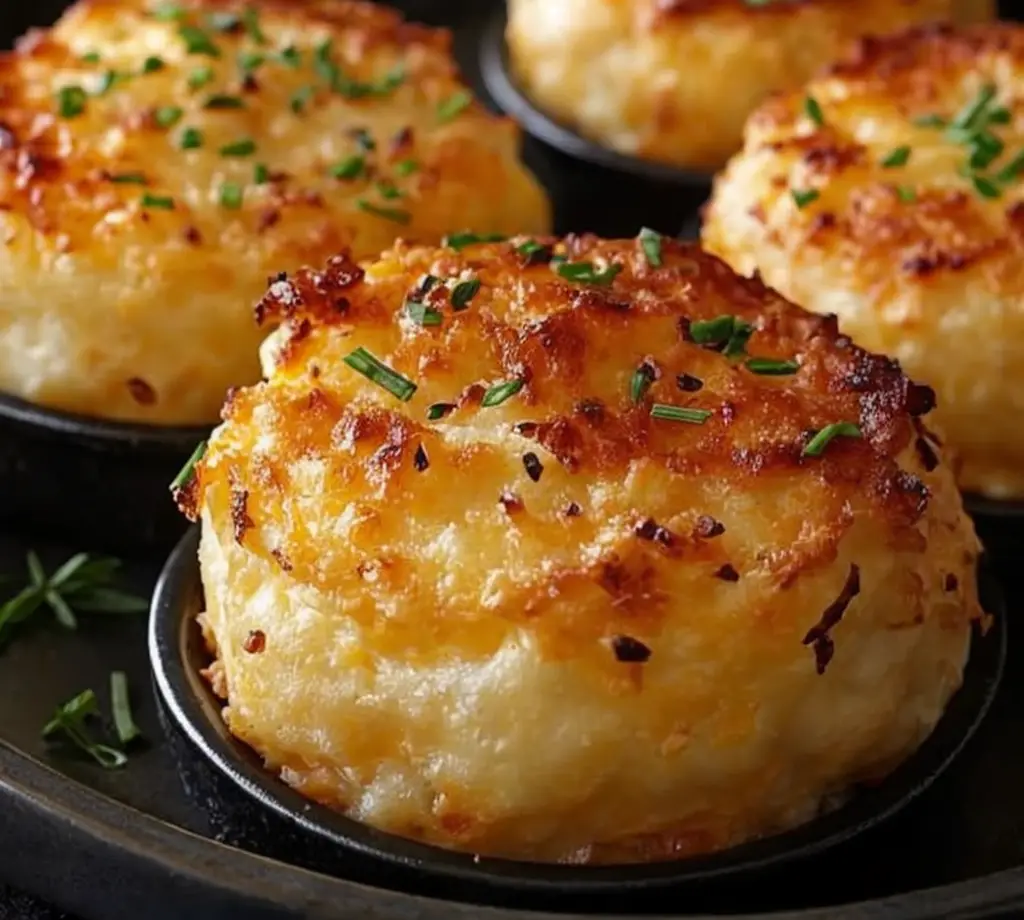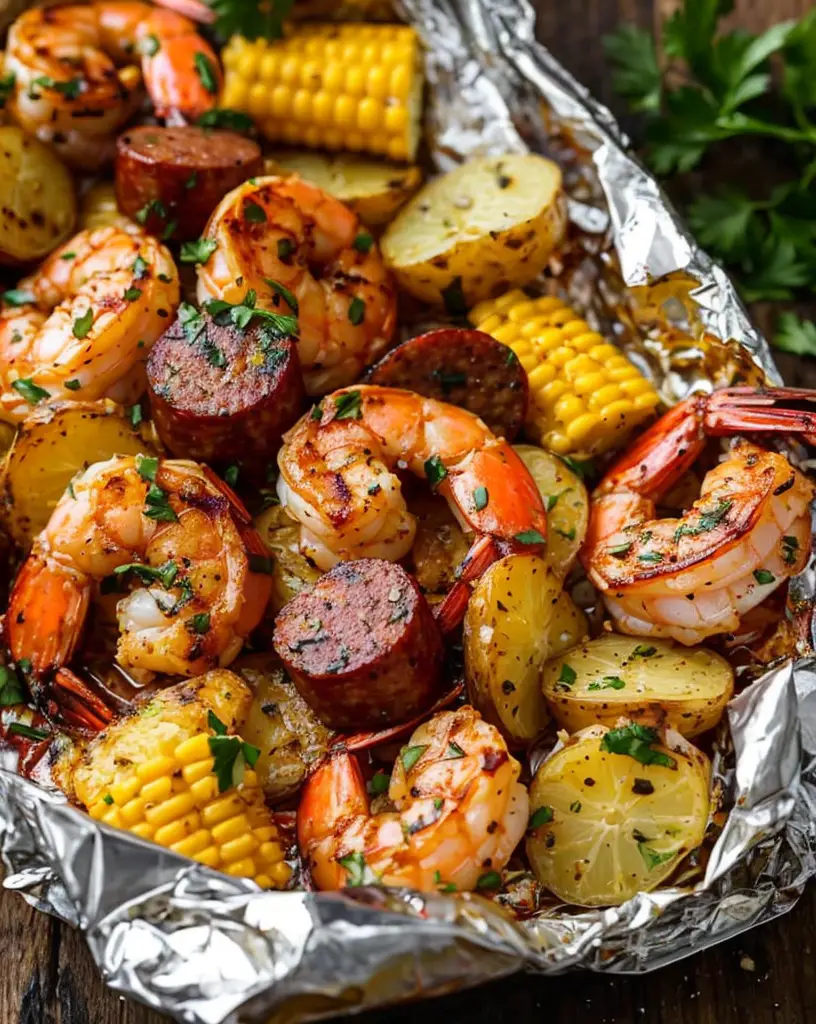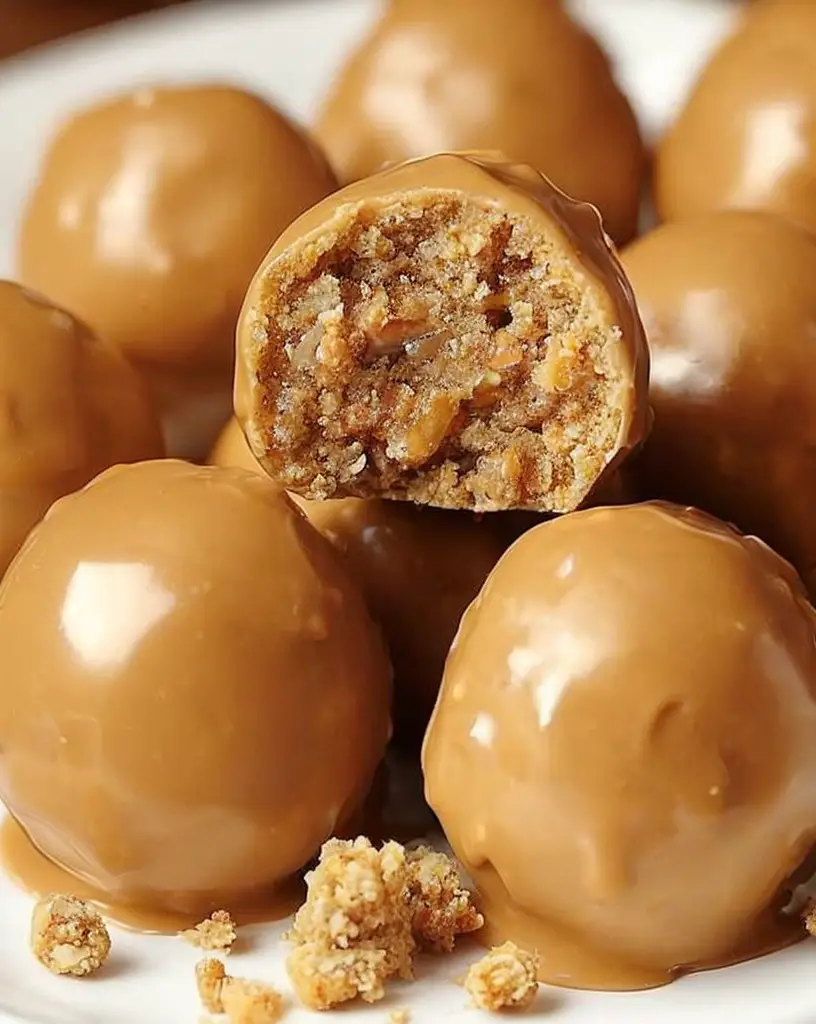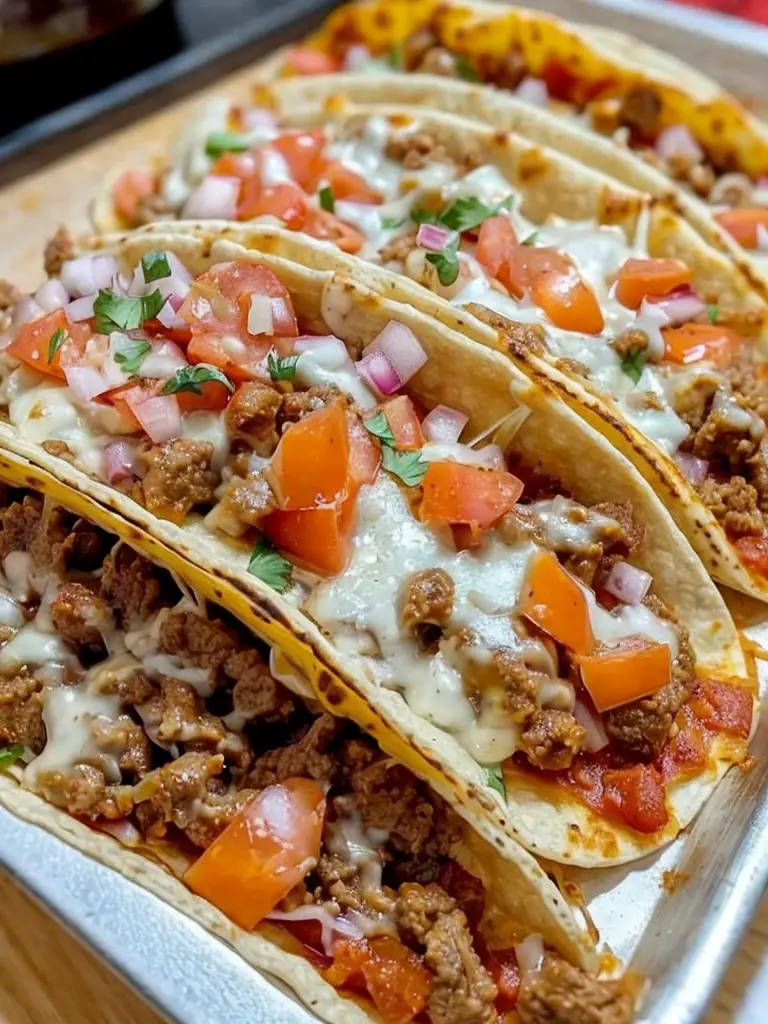Irresistible Mini Crème Brûlée Cheesecakes: A Delightful Dessert Experience
There’s something undeniably enchanting about crème brûlée, a dessert known for its rich custard base and crisp caramelized sugar topping. Now, imagine that same decadent experience transformed into mini cheesecakes! With these Irresistible Mini Crème Brûlée Cheesecakes, you can enjoy all the creamy, velvety goodness of traditional cheesecake, enhanced with the classic flavors of crème brûlée. Each tiny treat features a perfect graham cracker crust, a smooth cheesecake filling, and a caramelized topping that cracks beautifully when you tap it with a spoon. This dessert is not only a feast for the taste buds but also a visual delight.
Perfectly portioned, these mini cheesecakes are ideal for dinner parties, celebrations, or even a cozy night in. They are sure to impress your friends and family with their elegance and taste. The balance of sweetness and rich vanilla combined with the crunch of the caramelized sugar creates a delightful contrast that makes each bite memorable. Whether you’re treating yourself or sharing with loved ones, these cheesecakes will be an unforgettable dessert experience.
Quick Recipe Highlights
- Flavor Profile: Creamy vanilla with a hint of caramel and a touch of lemon zest.
- Texture: Smooth and creamy filling contrasted with a crunchy caramelized top.
- Aroma: Rich vanilla bean and caramelized sugar that lingers in the air.
- Visual Appeal: Elegant mini desserts with a glossy top and a golden-brown finish.
- Skill Level Needed: Requires some baking experience but is accessible for enthusiastic home bakers.
- Special Equipment: Mini tart pans or ramekins for baking the cheesecakes.
Recipe Overview
- Difficulty Level: This recipe is categorized as medium difficulty. While the steps are straightforward, achieving that perfect caramelized top requires attention and a bit of practice.
- Category: This dessert belongs to the indulgent sweets category and is perfect as a finishing touch to a meal.
- Cuisine: Drawing from French culinary tradition, this dessert captures the essence of classic crème brûlée with a cheesecake twist.
- Cost: The overall cost of the ingredients is reasonable, making this a great option for an impressive yet affordable dessert.
- Season: Ideal for all seasons, particularly spring and summer celebrations when fresh berries can be added as a topping.
- Occasion: Perfect for birthdays, anniversaries, holiday gatherings, or dinner parties where you want to impress your guests.
Why You’ll Love This Recipe
The taste and texture of these Irresistible Mini Crème Brûlée Cheesecakes are nothing short of extraordinary. The creamy filling is reminiscent of classic cheesecake, but the added flavor depth from vanilla and caramel gives it a unique twist. The contrast between the rich filling and the crunchy caramel topping creates a delightful mouthfeel that keeps you coming back for more.
Convenience and preparation benefits make this dessert a great choice for both seasoned bakers and beginners. The mini size allows for easy serving, and they can be made a day in advance, saving you time on the day of your event. All you need is some patience for the caramelization step, which adds a dramatic touch to the dessert.
Nutritional advantages can also be enjoyed, as the use of cream cheese and quality ingredients creates a dessert that feels indulgent without being overly heavy. Each mini cheesecake offers a rich flavor and satisfying texture while still being a smaller portion.
When it comes to social and entertaining value, these mini cheesecakes are winners. Their elegant presentation makes them perfect for gatherings or potlucks. Serve them with fresh berries or a dollop of whipped cream for added flair, and you’ll be the star of the event.
Lastly, the cost-effectiveness of this recipe makes it accessible for all budgets. With simple ingredients readily available, you can create a restaurant-quality dessert in the comfort of your own kitchen without breaking the bank.
Historical Background and Cultural Significance
The origin of crème brûlée dates back to the 17th century, with uncertain roots in France, Spain, and England. The traditional recipe has evolved over the centuries, but the core elements of creamy custard and crisp caramel remain integral. This dessert not only represents culinary excellence but also reflects a time of exploration and refinement in French cuisine.
Culturally, crème brûlée holds a special place in French gastronomy, often associated with fine dining and celebrated occasions. Its refined nature elevates any dining experience, making it a staple on dessert menus worldwide.
As culinary techniques advanced, the recipe adapted into various forms, leading to unique regional variations. From the classic French version to delightful adaptations like chocolate or fruit-infused recipes, this dessert showcases creativity and tradition in the kitchen.
Additionally, the evolution of the mini cheesecake has made this beloved dessert more accessible. By transforming the traditional crème brûlée into an individual serving, it honors the original while making it easier to enjoy at social gatherings or as a delightful personal indulgence.
Ingredient Deep Dive
Cream Cheese: A staple in many desserts, cream cheese originated in the United States and has become synonymous with a rich and creamy texture in cheesecakes. It’s an excellent source of calcium and protein, making it a satisfying addition to any dessert.
When selecting cream cheese, look for blocks that have a smooth texture and minimal preservatives. For storage, keep it in the refrigerator, tightly sealed, and look for the expiration date. If you need a substitute, mascarpone can provide a similarly creamy texture.
Sugar: One of the primary ingredients, sugar not only sweetens but also helps create the delightful caramelized topping. Sugar has been enjoyed for centuries worldwide, with its origins tracing back to ancient India and the Mediterranean region.
To choose the best sugar for caramelization, granulated sugar is ideal due to its purity. Store it in a cool, dry place, and if you prefer a less refined option, consider using brown sugar for a richer flavor profile.
Vanilla: A flavor powerhouse, vanilla is integral to these cheesecakes, enhancing the overall taste experience. Vanilla has a long history, being used by the Totonac people of Mexico long before being popularized in Europe.
When purchasing vanilla, opt for pure vanilla extract for the best flavor. Store it in a cool, dark place to preserve its potency. For substitutions, vanilla paste or imitation vanilla can be used, with varying flavor intensity and quality.
Common Mistakes to Avoid
- Overmixing the batter can lead to excess air incorporation, resulting in a less creamy texture. Mix until combined for best results.
- Not chilling the cheesecakes long enough can result in a soft filling that won’t hold its shape when serving. Make sure to chill for at least 4 hours.
- Skipping the caramelization step will leave your cheesecake lacking that signature crunchy topping. Use a kitchen torch for the best results.
- Using softened cream cheese rather than fully room temperature may cause lumps in the batter. Beat until completely smooth.
- Baking at too high a temperature can dry out the cheesecakes. Follow the recommended temperature for proper cooking.
- Not using a water bath can lead to uneven baking and a dry texture in the mini cheesecakes. Ensure even cooking by using this method.
- Not allowing the cheesecakes to cool completely before removing them from the pans can result in cracks and a ruined presentation.
- Not letting the cooked cheesecakes rest before adding the caramel layer can lead to melting sugar. Be patient for the perfect topping.
- Using a high-sugar topping can overpower the delicate cheesecake flavor. Balance is key for the best overall taste.
- Forgetting to grease the pans can lead to sticking, making it difficult to remove the mini cheesecakes without damage.
Essential Techniques
Water Bath Baking: This technique is crucial for achieving creamy, well-cooked mini cheesecakes. It prevents the direct heat from the oven from drying out the edges while keeping the center moist. To master this, wrap the bottoms of your cheesecake pans in aluminum foil, ensuring no water seeps inside. Place the pans into a larger baking dish filled with hot water before baking. Look for a gently set cheesecake with a slight jiggle in the center for perfect results.
Creaming Ingredients: Properly creaming together sugar and cream cheese is vital to a smooth cheesecake texture. This process incorporates air and creates a light mixture. Use a hand mixer or stand mixer on medium speed, ensuring the sugar is fully dissolved. Watch for a creamy consistency without lumps; this is your indicator of success.
Pro Tips for Perfect Irresistible Mini Crème Brûlée Cheesecakes
1. Invest in a quality kitchen torch for caramelizing sugar. It provides precise control over the browning process and helps avoid burns.
2. For an enhanced vanilla flavor, use vanilla bean paste instead of extract. It adds both flavor and visual appeal with visible flecks of vanilla.
3. If making these cheesecakes ahead of time, add the caramelized sugar topping just before serving to maintain its crunch.
4. Customize your toppings with seasonal fruits such as raspberries or strawberries for added freshness and flavor contrast.
5. Experiment with flavored crusts by adding crushed nuts or chocolate to the graham cracker mixture for a unique twist.
6. Ensure that all your ingredients are at room temperature before mixing for a more homogenous batter.
7. Allow the baked cheesecakes to cool in the oven after baking to minimize cracks and achieve a smooth top.
8. Use mini pie pans or silicone molds for easier removal and a more polished look on the plate.
Variations and Adaptations
For a regional variation, consider using matcha powder for a unique flavor twist that adds a stunning green color. This Asian-inspired adaptation offers a fresh take on the traditional flavor while maintaining the classic structure.
Seasonally, these cheesecakes can be infused with spices like pumpkin or ginger for a fall-inspired dessert. Topping with spiced whipped cream can elevate the flavors, making it perfect for autumn gatherings.
Dietary modifications can be made by using gluten-free graham crackers or nut-based crusts, ideal for those with gluten sensitivities. Experimenting with dairy-free cream cheese creates a vegan version for those who need it.
Flavor variations are endless; consider adding chocolate to the batter for a chocolate crème brûlée cheesecake. This decadent twist will satisfy any chocolate lover while keeping the essence of the original recipe.
For texture modifications, try adding a layer of fruit preserves between the crust and the filling for a fruity surprise, or top with a layer of mousse for added creaminess.
Finally, when it comes to presentation, consider serving these mini cheesecakes in decorative jars for a chic party look. Layer the cheesecake, caramel, and fresh berries for a visual treat.
Serving and Presentation Guide
When plating your Irresistible Mini Crème Brûlée Cheesecakes, consider using decorative plates to enhance the visual appeal. A simple drizzle of chocolate or raspberry sauce underneath can elevate the presentation.
Garnishing with fresh fruits or edible flowers adds a beautiful touch while complementing the flavors. A light dusting of powdered sugar can finish the look, adding elegance to each serving.
Traditional accompaniments like coffee or tea pair beautifully, enhancing the dessert experience. For modern suggestions, serve with a scoop of vanilla ice cream for a delightful contrast in temperature.
Temperature considerations are key; serve the cheesecakes chilled after caramelizing the sugar for optimal texture and flavor balance.
For portion control, consider serving these mini desserts in small portions, allowing guests to indulge without feeling overwhelmed. This fits the trend toward smaller, shared desserts in dining culture.
Wine and Beverage Pairing
When it comes to wine pairings, a sweet dessert wine like Sauternes or Moscato complements the richness of crème brûlée perfectly. These wines bring out the creamy notes while adding their floral or fruity character.
For non-alcoholic alternatives, a sparkling apple cider offers a refreshing contrast to the dense mini cheesecakes. The bubbles cleanse the palate and balance the sweetness effectively.
For coffee lovers, a rich espresso or gourmet coffee blend pairs excellently, enhancing the dessert with a touch of bitterness that contrasts with the sweetness.
Ensure beverages are served at the appropriate temperatures; chilled wines and warm coffee will maximize the enjoyment of this decadent dessert.
Storage and Shelf Life
To store your Irresistible Mini Crème Brûlée Cheesecakes, keep them in an airtight container in the refrigerator. They will last up to five days, maintaining their flavor and texture while chilled.
For transport, ensure they are secured in a sturdy container to avoid movement damage. If you notice any signs of spoilage such as off smells or discoloration, discard them immediately to ensure food safety.
Reheating is not recommended as it may alter the texture; enjoy them cold straight from the fridge. If you want to enjoy them later, consider freezing them before caramelizing the top layer.
When freezing, wrap each mini cheesecake in plastic wrap and place it in a freezer-safe container. They can last up to three months, but be sure to allow them to thaw completely before serving.
Make Ahead Strategies
Planning ahead is simple with these mini cheesecakes. Prepare the crust and filling a day in advance, allowing them to set overnight in the refrigerator for best results. This not only saves time but enhances the flavor as it melds overnight.
If you want to caramelize the sugar topping to serve later, do it just before serving to ensure maximum crunch, preserving the textural contrasts.
Assemble the cheesecakes in individual servings, or keep the components separate for guests to customize their desserts with fresh fruits and toppings.
Quality impact should focus on keeping the balance between taste and texture, resting the cheesecakes for a while before serving to settle flavors and improve texture.
Reheating any elements before serving should be avoided, as traditional crème brûlée is best served chilled. If using fresh elements, like fruits, add them right before serving for a refreshing finish.
Scaling Instructions
If you want to halve the recipe, simply divide all ingredient quantities by two, ensuring to keep the same cooking times. This is ideal for smaller gatherings or testing flavors before a larger event.
Doubling or tripling the recipe for larger groups should consider oven space; bake them in batches if necessary, and keep an eye on the timing adjustments based on different pan sizes or quantities.
Any equipment adjustments should cater to the number of servings; using smaller pans or muffin tins can help maintain even baking. Timing modifications are minimal if the overall volume is increased, so always keep a close eye on them as they bake.
Remember to adjust storage accordingly, as larger quantities may require more refrigerator space or more extensive planning for serving and display.
Nutritional Deep Dive
Each mini cheesecake boasts a macro breakdown primarily consisting of carbohydrates from the crust and sugars, fats from cream cheese, and a moderate amount of protein. This balance provides a satisfying treat that delivers on taste without excessive calories in smaller portions.
Micronutrient analysis reveals that ingredients like cream cheese and eggs provide calcium, vitamins A and D, while the addition of fruit toppings can enhance fiber content and add more vitamins.
Health benefits of enjoying these mini desserts include the enjoyment of creamy textures without guilt. Portion control allows for indulging without straying too far from dietary goals.
Dietary considerations should keep an eye on ingredients for allergies as well as balancing indulgence with moderation. Keeping desserts as occasional treats can help in a balanced diet.
Portion analysis shows these mini cheesecakes are concrete in achieving satisfaction without leading to overindulgence, making them an excellent choice for both health-conscious individuals and dessert lovers alike.
Dietary Adaptations
For a gluten-free version, simply use alternative flours for the crust, or consider using ground nuts for a granola-type base that doesn’t require baking. This caters to those with gluten intolerances while still providing a delicious crust.
To create a dairy-free variant, substitute cream cheese with cashew cream or a dairy-free cream cheese alternative, ensuring similar flavor and texture characteristics while accommodating those with dairy allergies.
If vegan adaptations are needed, eggs can be replaced with flaxseed meal or chia seeds mixed with water, allowing the structure to hold while catering to plant-based diets.
For a low-carb or keto version, use almond flour for the crust and sugar alternatives for sweetness. This satisfies cravings without breaking dietary restrictions.
Paleo adaptations can remove refined sugar entirely, relying on natural sweeteners like honey or pure maple syrup for a more wholesome treat.
For low-FODMAP options, ensure that the crust ingredients are safe and use lactose-free cream cheese to cater to sensitive digestive systems.
Troubleshooting Guide
Texture issues can arise if the filling is overbaked or underbaked; always aim for a slight jiggle in the center while cooling to ensure a creamy result.
To correct flavor balance, consider adjusting the sugar content or adding a touch of salt to enhance sweetness without overpowering. A hint of citrus can also brighten flavors effectively.
Temperature problems often arise during caramelization; if sugar burns, reduce the flame and mix with a splash of water, allowing it to dissolve more gradually.
If equipment challenges occur, such as using a torch, practice on a small area before caramelizing the full top, ensuring even and controlled melting of sugar.
For ingredient substitutions, like using a different type of cheese or sweetener, shading flavor might require trials to find the right balance and consistency.
If timing concerns arise, ensure that chilling times are strictly followed to allow flavors to meld and creating a nice structural hold before serving.
Recipe Success Stories
Community feedback has shown that these mini cheesecakes are a hit at all types of gatherings, with many praising their elegant appearance and rich taste. Readers consistently report back with great success stories, sharing how they’ve incorporated different flavors and toppings to make the dessert their own.
Variation successes abound, as bakers experiment with various seasonal fruits or spices, leading to unique twists on the classic recipe while maintaining its core elements.
Some readers report adaptation stories where dietary restrictions were taken into consideration, using products like gluten-free graham crackers or non-dairy cheese successfully.
For those interested in photography, tips from the community suggest using natural light and interesting garnishes to capture the beauty of these desserts effectively.
Frequently Asked Questions
1. Can I use other flavors besides vanilla? Absolutely! You can experiment with different extracts or citrus zest. Almond or orange can complement the flavors nicely. Just ensure they are used in moderation, as they can be potent!
2. How do I store leftover cheesecakes? Keep them in an airtight container in the refrigerator for up to five days. Ensure the caramelized sugar does not stay on top too long to maintain its crunch. For longer storage, freeze before caramelizing.
3. Can I make these gluten-free? Yes, simply substitute the graham crackers for gluten-free varieties or nut-based crusts, which can still provide a delicious result.
4. Is it necessary to use a water bath? While not strictly necessary, using a water bath prevents uneven cooking and helps retain moisture, leading to a creamier texture.
5. What if my sugar doesn’t caramelize correctly? If sugar clumps or burns, it might be too dry. Keep the temperature low and keep stirring to achieve a consistent caramelization.
6. Can I use a store-bought crust? Indeed! Pre-made graham cracker crusts are a convenient option; use them to save time. Just ensure the size fits your mini cheesecake pans.
7. How long should I chill the cheesecakes? Chill for a minimum of 4 hours or preferably overnight for best flavor and texture.
8. What’s the best way to reheat these mini cheesecakes? Reheating is not recommended as it alters the texture. Enjoy them chilled or at room temperature for the best experience.
9. Can I add toppings to these cheesecakes? Absolutely! Fresh fruit, chocolate shavings, or whipped cream make excellent accompaniments.
10. How do I know when they’re done baking? The cheesecakes are done when the edges are set but the center is still slightly jiggly. They will firm up as they cool.
Additional Resources
For related recipes, consider exploring other mini desserts or unique cheesecakes in our collection. Technique guides can help you master caramelization and baking methods for all types of cheesecakes. Ingredient information is available to provide insight into the best quality components to use.
Equipment recommendations focus on useful tools for baking cheesecakes, including high-quality pans and mixers, ensuring ease in preparation and cleanup. Seasonal variations encourage the incorporation of fresh ingredients that enhance flavor and keep this dessert fresh throughout the year.
Join the Conversation
We invite you to share your mini cheesecake experiences on social media! Whether it’s photos of your creations or suggestions for variations, the community loves to see how others enjoy these recipes.
Photography tips shared by followers stress the importance of natural light; unique garnishing plays a significant role in presentation that delights viewers. Recipe reviews help us refine our content and connect with readers more effectively, ensuring we continue to provide the best possible culinary experiences.
Engagement encourages creativity, and we welcome your input on recipe adaptations and improvements. You are an important part of our kitchen community!
The Recipe
Irresistible Mini Crème Brûlée Cheesecakes
Serves: 12 mini cheesecakes
Prep Time: 30 mins
Cook Time: 25 mins
Total Time: 55 mins
Kitchen Equipment Needed
- Mini tart pans or ramekins
- Mixing bowls
- Electric mixer
- Kitchen torch
- Measuring cups and spoons
- Aluminum foil (for water bath)
Ingredients
- 1 cup graham cracker crumbs
- 1/4 cup unsalted butter, melted
- 2 cups cream cheese, softened
- 2/3 cup granulated sugar
- 2 large eggs
- 1 tablespoon vanilla extract
- 1/4 teaspoon salt
- 3 tablespoons granulated sugar (for topping)
Directions
- Preheat your oven to 325°F (160°C). Prepare a water bath by placing a larger baking dish in the oven filled with hot water.
- In a mixing bowl, combine graham cracker crumbs and melted butter. Press mixture into the bottom of each mini tart pan to form the crust.
- In another bowl, beat the cream cheese and sugar until smooth and creamy. Add eggs, vanilla, and salt, mixing until fully combined.
- Pour the cheesecake filling over the prepared crust in each mini tart pan, filling them about 3/4 full.
- Place the mini cheesecakes into the water bath and bake for about 25 minutes, or until set around the edges but still jiggly in the center.
- Remove from the oven and let them cool completely before chilling in the refrigerator for at least 4 hours or overnight.
- Before serving, sprinkle a thin layer of granulated sugar on top of each cheesecake and use a kitchen torch to caramelize the sugar until golden brown. Let it sit for a few minutes before serving.
Recipe Notes
- Ensure the sugar is evenly spread on top for a uniform caramel layer. Avoid using too much, as it can lead to bitterness.
- If you don’t have a kitchen torch, you can place the sugar-topped cheesecakes under the broiler for a few seconds – just watch carefully to avoid burning.
- For additional flavor, consider integrating citrus zest or flavored extracts into the filling.




